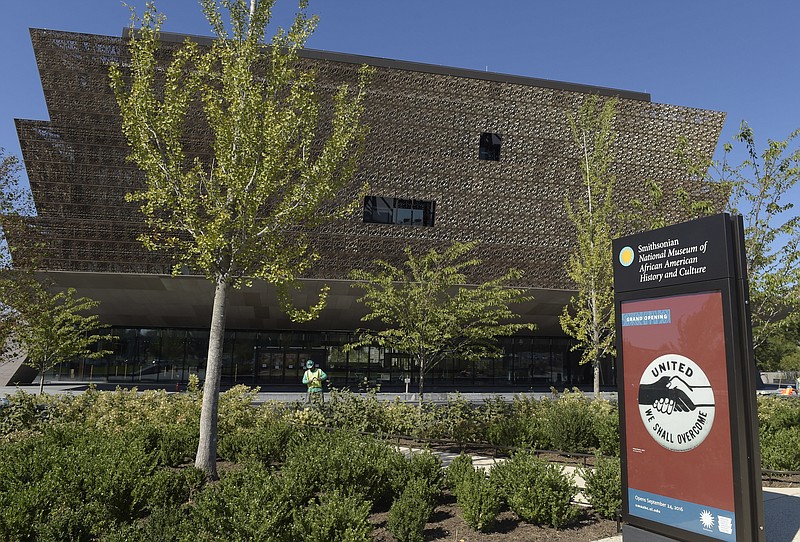Earlier this month, I visited the National Museum of African American History and Culture in Washington, D.C. Since its opening in September 2016, the museum has drawn countless visitors. January and February provide the best times for an unhurried visit, which is essential to soak in the many displays, artifacts and audiovisual presentations.
The historical galleries are arranged along a 1.5-mile-long, upward spiral which features many offshoots that focus upon specific people and events. Slavery's history is traced from the first colonization of the Caribbean and North America by Spanish and later French and English settlers. Diseases brought from Europe decimated native populations. Initial shipments of African slaves mined silver and raised crops for island economies. Later, a booming economy based upon cotton increased the need for slave labor in the states that would later secede from the Union. Shackles, diagrams of the holds of slave ships, accounts of slave auctions and punishments of slaves bring alive the horrors that awaited Africans who were captured and sold to white masters. Eight U.S. presidents - Washington, Jefferson, Madison, Monroe, Jackson, Tyler, Taylor and Polk - owned slaves while in office.
The documentation of the decades of threats and compromises within the Congress highlight slavery as the one issue that legislators could never solve. Civil War, the Emancipation Proclamation of 1863 (which did not free the slaves in four border states), Reconstruction and segregation under Jim Crow laws are presented far more graphically than any course in American history could achieve.
Having grown up in a tightly segregated Georgia town, I thought of the poverty, injustices and utter lack of opportunity of the African-American boys and girls of my generation. During my years in medical practice, I had the privilege of caring for two African-American men close to my age who had grown up in my hometown. Our stories were so different that we could have lived on different planets. One of the men regularly attended family reunions in our hometown.
Among the many powerful displays, the most poignant for me was the burial coffin of Emmett Till, featured in an alcove along with photographs and commentary. Two white men from Mississippi kidnapped, tortured and killed the 14-year-old Chicago boy who was visiting relatives in the state in August 1955. The wife of one of the murderers, who was clerking a family store, alleged that the lad had made obscene comments while trying to pull her toward him. She recanted her story decades later. A jury found the two men innocent in a trial a month after the murder. The men contended that they had released Till and that the body that had been recovered was someone else. A year later, knowing that they could not be re-tried for their crime, they confessed their guilt to a reporter for Look magazine in exchange for a sizable payment. Outrage over the atrocity empowered the civil rights movement.
Appalled by the state of her son's body, Till's mother insisted that his casket should remain open in the hours preceding his funeral ceremony so that viewers could see the brutal outcome of Southern racism. In 2005, Till's body was exhumed. DNA analysis confirmed the identity of the remains, which were reburied in another casket. Till's mother donated the burial casket to the museum.
The National Museum of African American History and Culture presents many truths about our nation's troubled and often violent racial history. We have a long way to link those truths to a nationwide process of reconciliation.
Every member of Congress should allocate time for a lengthy, meditative visit to this museum. Perhaps this would finally lead to the passage by the House of Representatives of a federal anti-lynching bill, which passed on a unanimous Senate vote in December 2018.
Consider a personal pilgrimage to this incomparable museum.
Contact Clif Cleaveland at ccleaveland@timesfreepress.com.
